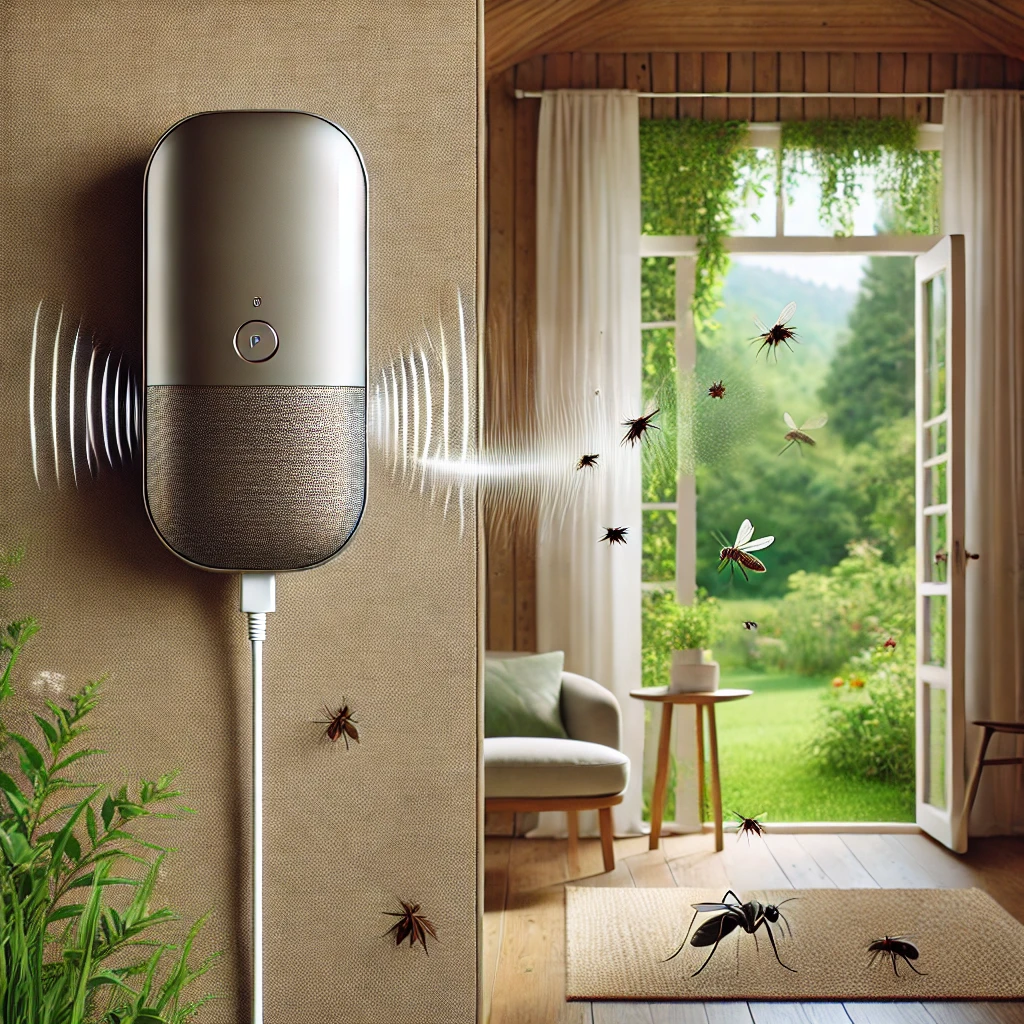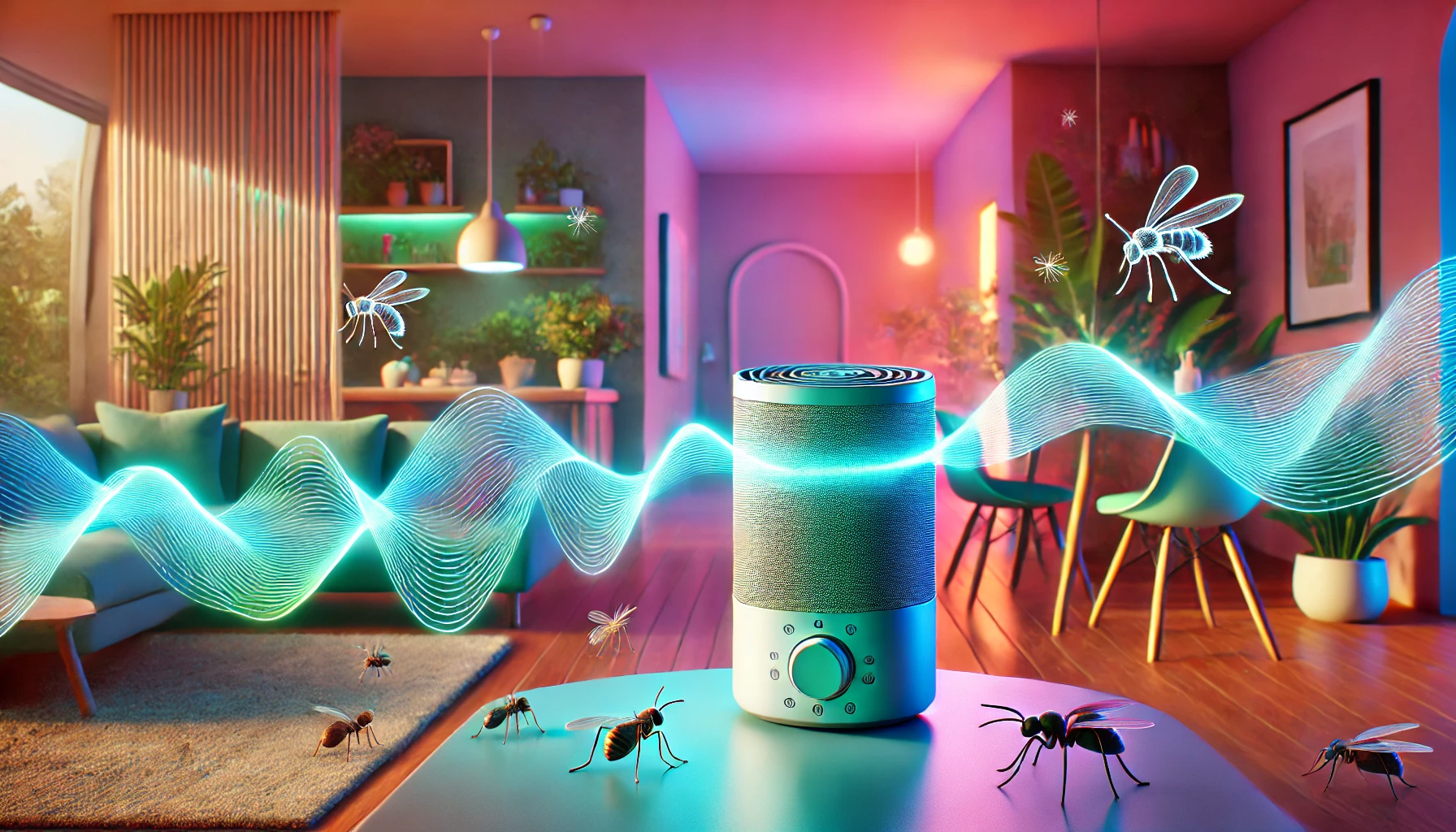You’ve probably seen those sleek, plug-in devices advertised as a hassle-free way to keep pests out of your home. No chemicals, no traps—just sound waves that send insects scurrying. Sounds pretty amazing, right? But if you’re like me, you might be wondering: How do these insect sound repellents actually work? And, more importantly, do they live up to the hype?
Whether you’re fed up with mosquitoes buzzing in your ear at night or ants marching across your kitchen counter, the idea of a chemical-free solution is tempting. Let’s break down the science behind these devices and find out if sound really can send bugs packing.
How Sound Repellents Work ?

The Basics of Sound Technology
Insect sound repellents, often called ultrasonic repellents, work on the premise that certain sound frequencies can deter pests. The devices emit sound waves, typically at ultrasonic frequencies (above 20,000 Hz), which are inaudible to humans but disturbing to insects. These sound waves create an uncomfortable environment for pests, leading them to flee the area.
How Ultrasonic Frequencies Affect Insects
Insects are highly sensitive to their environment, relying on various signals, including sound, to communicate and navigate. Ultrasonic repellents exploit this sensitivity by disrupting their behavior. The high-frequency sounds are believed to interfere with their nervous systems, disorienting them and preventing them from functioning normally.
For example, mosquitoes use sound to locate prey, and ultrasonic waves can disrupt their ability to zero in on a host. Similarly, ants and cockroaches may perceive these frequencies as a threat, prompting them to avoid the area where the sound is strongest.
Types of Insect Sound Repellents
Ultrasonic Repellents
Ultrasonic repellents are the most common type of sound repellents for insects. These devices emit sound waves above the hearing range of humans and most pets but are disruptive to insects like mosquitoes, flies, and ants. They are typically plugged into an electrical outlet and work continuously to keep pests away from the designated area.
Sonic Repellents
Unlike ultrasonic repellents, sonic repellents produce sounds within the range of human hearing. While they are less popular for indoor use (due to the audible noise), they are often used in outdoor environments to deter larger pests like rodents and birds. Some sonic repellents also claim to deter insects, though their efficacy is more questionable.
Subsonic Repellents
Subsonic repellents emit very low-frequency sounds, which are sometimes used in combination with ultrasonic frequencies to repel a wider range of pests. These devices are less common but can be found in certain multi-frequency repellent models.
Effectiveness of Insect Sound Repellents
Scientific Studies and Real-World Results
The effectiveness of insect sound repellents has been the subject of debate. While manufacturers claim these devices can successfully repel pests, scientific research has yielded mixed results.
- Mosquitoes: Some studies suggest that ultrasonic waves can temporarily deter mosquitoes, especially in small enclosed spaces. However, their long-term efficacy remains uncertain, with some research indicating that mosquitoes can eventually adapt to the sound.
- Ants and Cockroaches: Similarly, ultrasonic repellents may be effective in the short term but tend to lose their impact over time. Ants and cockroaches, known for their adaptability, can grow accustomed to the noise, reducing its effectiveness.
- Flies and Spiders: For flying insects like flies, the results are inconsistent. Some users report success, while others see little to no effect. Spiders, being less reliant on sound for navigation, may not be significantly affected by ultrasonic frequencies.
User Testimonials and Expert Opinions
Many homeowners report varying levels of success with insect sound repellents. Some praise them for reducing pest activity, while others notice little difference. Experts often caution that while these devices can be part of a pest control strategy, they should not be relied upon as the sole solution. Pairing them with other methods—like physical barriers, traps, and natural repellents—often yields better results.
Safety and Environmental Impact
Are Sound Repellents Safe for Humans and Pets?
One of the biggest advantages of insect sound repellents is their safety. Because they use sound waves rather than chemicals, they pose no health risks to humans or pets (with a few exceptions, such as pets with particularly sensitive hearing). This makes them an appealing option for households with children, pets, or individuals sensitive to chemical sprays and insecticides.
Environmental Considerations
Ultrasonic repellents are also eco-friendly, as they do not involve harmful chemicals that can seep into the soil or water supply. They offer a non-toxic alternative for those who want to keep their homes and gardens pest-free without damaging the environment.
Alternatives to Sound Repellents
While insect sound repellents may provide some relief from pests, they are not always 100% effective. Therefore, it’s worth considering alternative methods of pest control, especially if you’re dealing with a severe infestation. Here are some additional natural solutions:
- Essential Oils: Certain essential oils, such as citronella, peppermint, and eucalyptus, are known for their insect-repelling properties. They can be used in diffusers or sprays to keep pests away.
- Physical Barriers: For homes, installing screens on doors and windows can help keep flying insects like mosquitoes out. For gardens, netting and row covers can provide a physical barrier against pests.
- Companion Planting: In gardens, planting certain herbs and flowers, such as marigolds and lavender, can naturally repel insects.
- Traps: Insect traps, such as sticky traps or bait stations, can be used alongside sound repellents for a multi-pronged approach to pest control.
Resources
- Pest Control Technology – Ultrasonic Pest Control Devices
- Research on Ultrasonic Repellents – National Pesticide Information Center
- How Sound Frequencies Affect Insects – Entomological Society of America
FAQs
1. Do insect sound repellents really work?
The effectiveness of insect sound repellents varies. They may work temporarily or in small enclosed areas, but their long-term effectiveness is uncertain.
2. Are sound repellents safe for humans and pets?
Yes, insect sound repellents are generally safe for humans and pets. However, they may cause discomfort for pets with sensitive hearing, such as dogs or rodents.
3. Which insects can be deterred by sound repellents?
Ultrasonic sound repellents are designed to target insects like mosquitoes, ants, flies, and cockroaches. However, their effectiveness can vary depending on the species.
4. How long do sound repellents take to work?
Some users report seeing results within a few days, while others may need to use the device for weeks to notice a reduction in pests.
5. Can I use insect sound repellents in my garden?
Yes, ultrasonic sound repellents can be used outdoors. However, they may be less effective in large open areas where sound waves can dissipate.
Final Toughts
Insect sound repellents offer an eco-friendly, chemical-free option for controlling pests. While the science behind them is intriguing, their effectiveness remains inconsistent. These devices may work best as part of a broader pest control strategy, alongside physical barriers, natural repellents, and traps. If you’re considering using sound repellents in your home or garden, give them a try, but be prepared to supplement them with other methods if necessary.
Have you tried insect sound repellents? Share your experience in the comments below or explore more natural pest control options on our blog!

